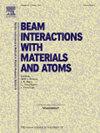实验数据驱动的(γ,n)截面建模和预测与物理信息的神经网络和梯度增强决策树
IF 1.4
3区 物理与天体物理
Q3 INSTRUMENTS & INSTRUMENTATION
Nuclear Instruments & Methods in Physics Research Section B-beam Interactions With Materials and Atoms
Pub Date : 2025-06-11
DOI:10.1016/j.nimb.2025.165771
引用次数: 0
摘要
在这项研究中,我们提出了一个混合机器学习框架,用于建模和预测核图上的(γ,n)反应截面,将物理可解释性与预测能力相结合。第一阶段使用物理信息神经网络(PINN)来拟合EXFOR的实验数据,同时强制执行特定领域的约束,如能量阈值、洛伦兹共振行为和超越巨偶极子共振(GDR)的单调性。然后使用这些高质量的拟合来训练梯度增强决策树(GBDT)模型,该模型基于广泛的核特征集,包括质量、壳效应、分离能量和变形参数。所得到的模型与已知同位素的实验和评估数据很好地吻合,并合理地推断出缺乏测量的外来核素。对稳定同位素、锕系元素和富中子核的实例研究证明了该模型的稳健性。这种方法说明了物理信息建模和数据驱动建模在改进核物理、仿真和安全应用中的截面覆盖方面的互补性。本文章由计算机程序翻译,如有差异,请以英文原文为准。
Experimental data-driven modeling and prediction of (γ,n) cross-sections with physics-informed neural networks and gradient boosted decision trees
In this study, we present a hybrid machine learning framework for modeling and predicting (γ,n) reaction cross sections across the nuclear chart, combining physical interpretability with predictive power. The first stage uses a Physics-Informed Neural Network (PINN) to fit experimental data from EXFOR while enforcing domain-specific constraints, such as energy thresholds, Lorentzian resonance behavior, and monotonicity beyond the Giant Dipole Resonance (GDR). These high-quality fits are then used to train a Gradient Boosted Decision Tree (GBDT) model on a broad set of nuclear features including mass, shell effects, separation energies, and deformation parameters. The resulting model agrees well with both experimental and evaluated data for known isotopes and extrapolates plausibly to exotic nuclides lacking measurements. Case studies on stable isotopes, actinides, and neutron-rich nuclei demonstrate the model’s robustness. This approach illustrates the complementarity of physics-informed and data-driven modeling for improving cross-section coverage in nuclear physics, simulation, and security applications.
求助全文
通过发布文献求助,成功后即可免费获取论文全文。
去求助
来源期刊
CiteScore
2.80
自引率
7.70%
发文量
231
审稿时长
1.9 months
期刊介绍:
Section B of Nuclear Instruments and Methods in Physics Research covers all aspects of the interaction of energetic beams with atoms, molecules and aggregate forms of matter. This includes ion beam analysis and ion beam modification of materials as well as basic data of importance for these studies. Topics of general interest include: atomic collisions in solids, particle channelling, all aspects of collision cascades, the modification of materials by energetic beams, ion implantation, irradiation - induced changes in materials, the physics and chemistry of beam interactions and the analysis of materials by all forms of energetic radiation. Modification by ion, laser and electron beams for the study of electronic materials, metals, ceramics, insulators, polymers and other important and new materials systems are included. Related studies, such as the application of ion beam analysis to biological, archaeological and geological samples as well as applications to solve problems in planetary science are also welcome. Energetic beams of interest include atomic and molecular ions, neutrons, positrons and muons, plasmas directed at surfaces, electron and photon beams, including laser treated surfaces and studies of solids by photon radiation from rotating anodes, synchrotrons, etc. In addition, the interaction between various forms of radiation and radiation-induced deposition processes are relevant.

 求助内容:
求助内容: 应助结果提醒方式:
应助结果提醒方式:


